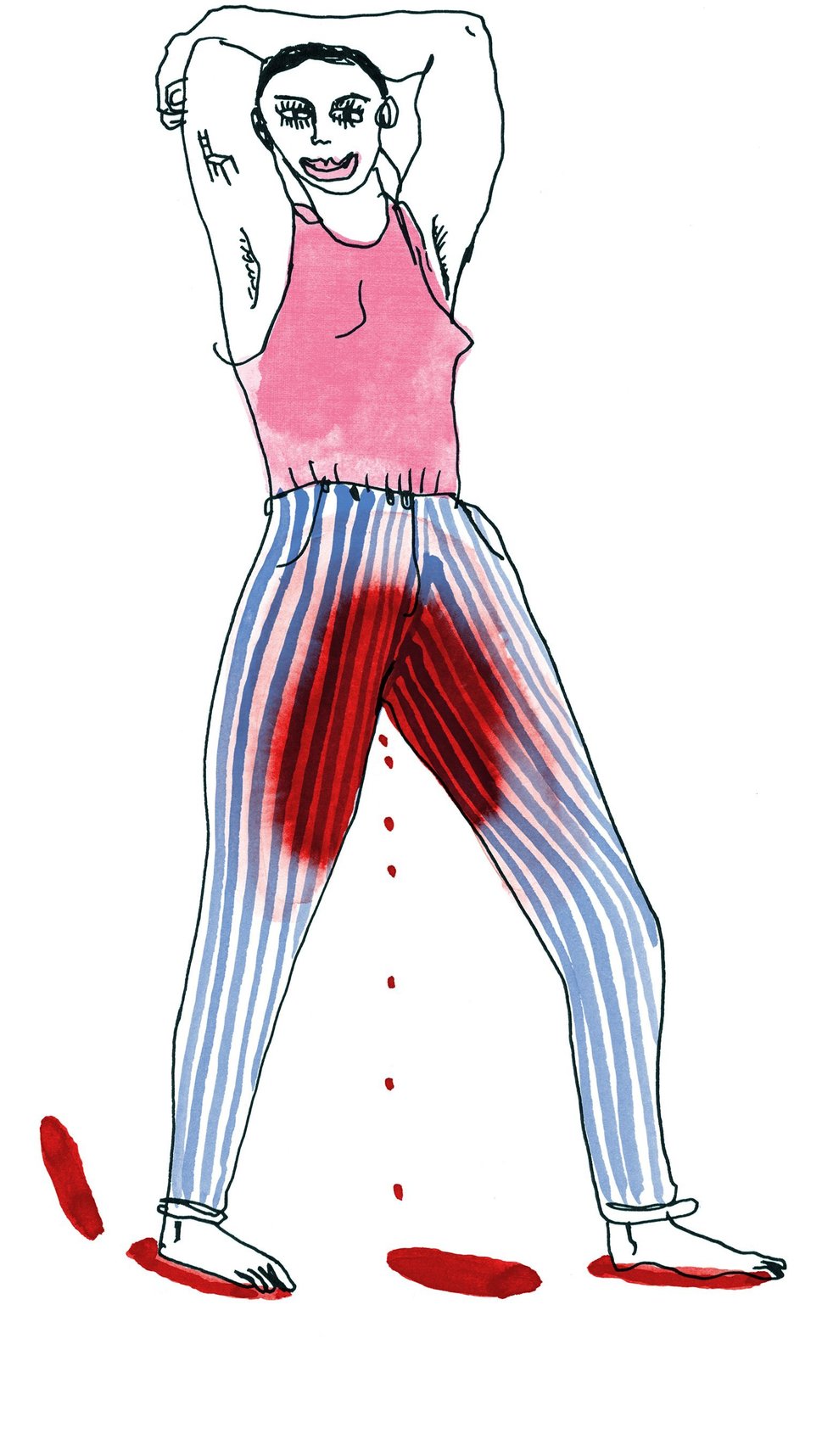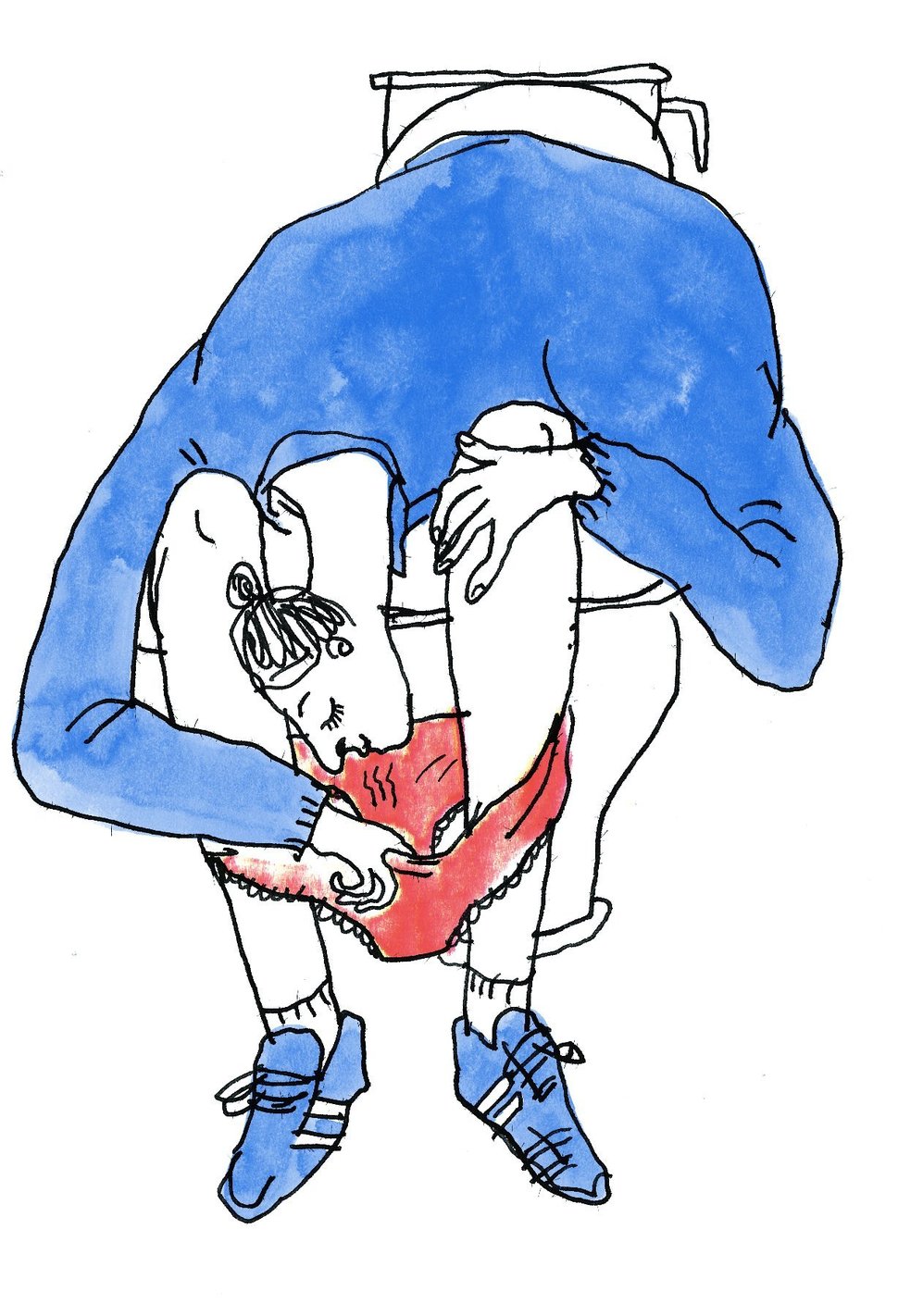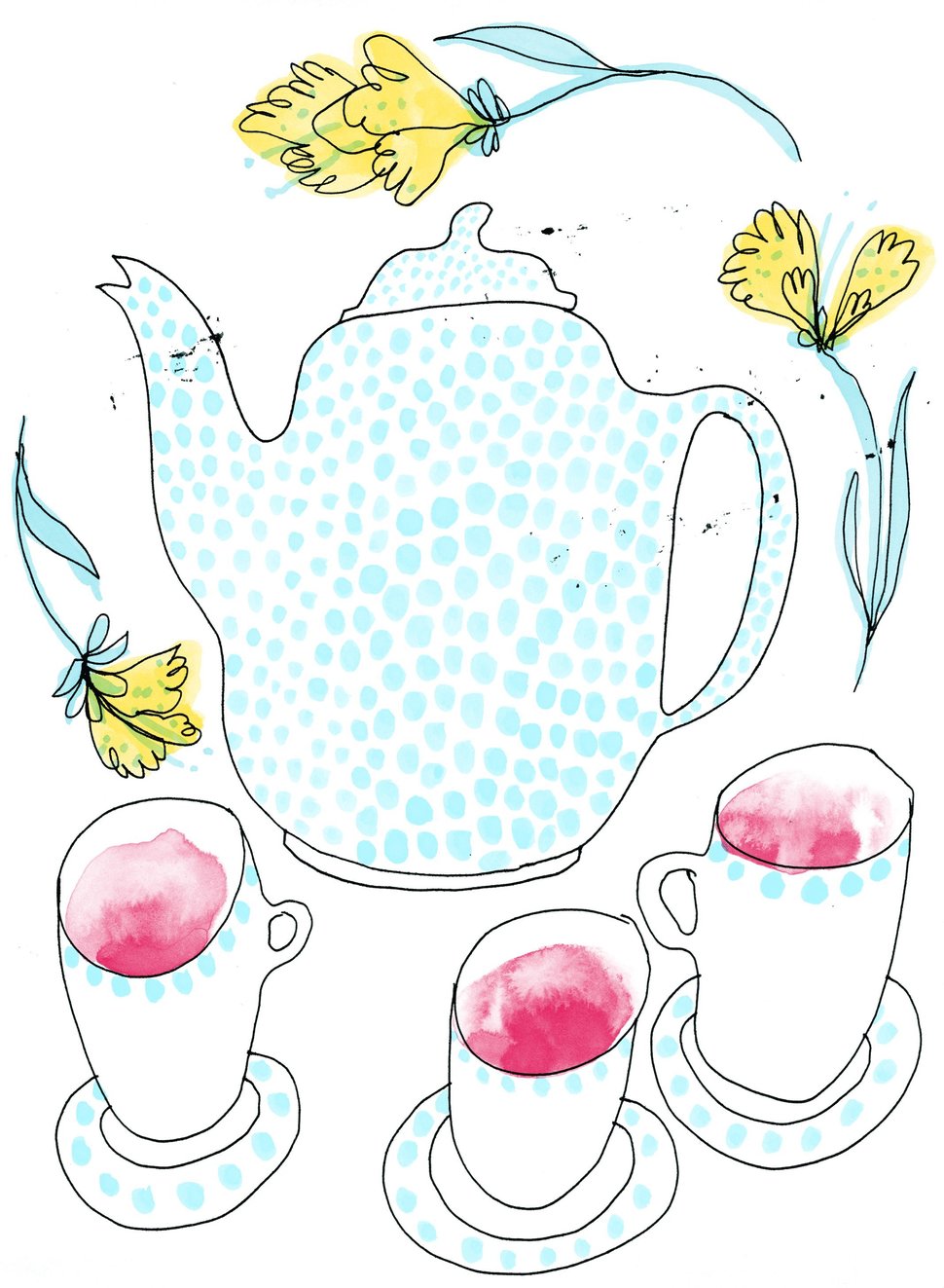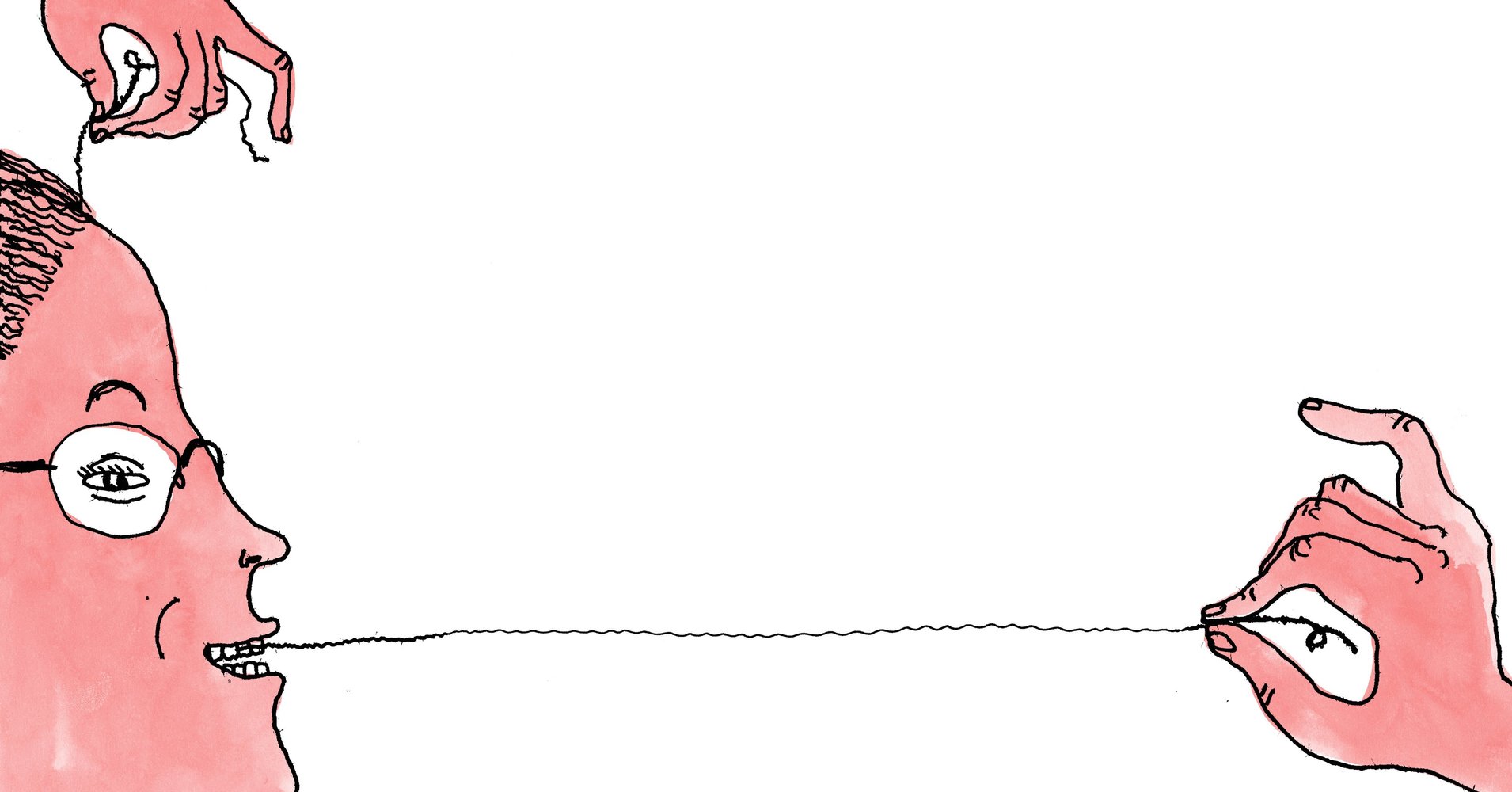[ad_1]
I am a “gross girl,” and I’ve identified as such for as long as I can remember.
In part, I have my mother to thank. Although she dutifully applies a thick layer of lipstick before any and all activities, including bath time, she also adheres to the cardinal toilet flushing rule “If it’s yellow, let it mellow” and counts quickly flitting her wrist under a running faucet as washing her hands.
For my sisters and I, hygienic transgressions have always been badges of honor. When we were younger, we’d compete to see who could go the longest without showering, cackling together while we discussed which body parts itched the most. We built toilet paper castles in the mellow bowls our mother left behind, piling the paper like cotton clouds in the middle of a urine-filled moat.
As I got older, I remained gross.
During my freshman year of college, I wore the same leggings every day, deodorizing the crotch instead of washing them properly. My senior year, rather than walking all the way to the downstairs bathroom in my apartment, I took to peeing in a mason jar on my bedroom floor. When spillage occurred, I’d wipe it up with a rogue bit of laundry.
There are others like me, I know. I’ve seen evidence in listicles across the web. There’s BuzzFeed’s “49 Gross Things Most Girls Secretly Enjoy,” which includes “running your fingers through your pubes in a nonsexual way.” Bustle’s “19 Gross Things All Women Do in Private (Or At Least When We Think No One’s Watching)” exalts the fun of “examining your panty crust like you’re a scientist.” Cosmopolitan’s “13 Super-Gross Things Women Do That Men Don’t Know About” takes the cake with a description of cleaning yourself after a period-poop combo ― “the good ole PB&J wipe!”
The headlines make plain the fact that countless women indulge their grossest urges out of curiosity, laziness and pure fascination. Yet their bodily offenses, so counter to the image of a pristine and clean young lady reflected in etiquette books and American Girl Doll catalogues, are often kept secret ― or, at the very least, outside the purview of men.

Enter A Girl’s Guide to Personal Hygiene, a picture book illustrated by Bristol-based artist Tallulah Pomeroy that’s full of the kinds of gross girl confessions that trump even my and my sisters’ rituals.
Divided into chapters including “Picking & Squeezing,” “Nooks & Crannies,” “Periods,” and “Tasty Snacks,” Pomeroy’s book ― released on Feb. 13 by Soft Skull Press ― features anonymously submitted anecdotes detailing the nasty shit women do behind closed doors, from smelling their dirty underwear to free-bleeding in their pants.
The 112-page paperback is a celebration of everything feminine and dirty ― an homage to the women with a surplus of earwax, an abundance of gray pubes and far too many crimson-stained articles of clothing.
Pomeroy, the in-house illustrator at Catapult, started the project over two years ago. Inspiration struck after she overheard two women gossiping about a friend who’d drunkenly taken a shit in the sink. Utterly scandalized, they declared that anyone who could do such a thing was “not a girl.” This got Pomeroy, 25, thinking: Which of her own private habits would disqualify her from girlhood?
Around the same time, Pomeroy’s then-boyfriend lent her Charlotte Roche’s 2008 book Wetlands, which chronicles a sexually liberated and unabashedly grotesque 18-year-old’s hospital stint recovering from a botched ass shaving accident. No dirty details are spared as the protagonist, with time on her hands, takes stock of her sexual exploits and corporeal habits. “I love it when sperm dries on my skin, when it crusts and flakes off,” reads one relatively tame line.
Not enough for you? Here’s more (obviously NSFW):
When I jerk somebody off, I always make sure that some cum gets on my hand. I run my fingers through it and let it dry under my long nails. That way, later in the day, I can reminisce about my good fuck partner by biting my nails and getting bits of the hardened cum to play with in my mouth; I chew on it and, after tasting it and letting it slowly dissolve, I swallow it. It’s an intention I’m very proud of: the memorable sex bon-bon.
These are the sorts of passages that titillate a segment of readers and nauseate the rest. Pomeroy counts herself among the former group, enraptured by Roche’s ability to treat the body as both a site of sexual pleasure and grotesque glory. She endeavored to do the same with A Girl’s Guide to Personal Hygiene.
“She was so unashamed to the point of being proud,” Pomeroy said of the primary Wetlands character, Helen. “She loves that she’s gross. I think that’s what I identified with the most ― that I could feel positive about these things rather than ashamed of them.”

This combination of events ― reading Wetlands and overhearing the shit-in-the-sink story ― ultimately prompted Pomeroy to forge a space where women could share the nitty-gritty details of their nasty pastimes. In 2016 she created a private Facebook group cheekily titled “A Girl’s Guide to Personal Hygiene” and invited all her female friends to join. Before long, friends invited friends and the group went, as Pomeroy described, “mental.”
Right away, stories started rolling in, each woman playfully trying to out-gross the last. Pomeroy even created a submission form so some members could share their funkiest exploits anonymously if they so desired. The confessions achieved Roche-levels of nastiness. “I like to pick my nose while I masturbate. It helps,” one woman wrote. “I like to smell the contents of my Mooncup because someone once told me theirs smelled like beef,” wrote another.
Women even started using the Facebook group to seek advice about personal matters like IUD insertion and achieving multiple orgasms. It quickly became clear to Pomeroy that the space she carved out wasn’t just something women wanted ― it was something they needed.
From the beginning, Pomeroy said she had dreams of turning the confessions into a book ― an ironic etiquette guide that would “take the piss out of the idea that girls should be hygienic.” She had her doubts, though. Beyond a sense of gratification, the Facebook group had also awakened in Pomeroy a bubbling sense of humiliation she hadn’t even realized she possessed.
“A voice of shame,” she explained. “The voice you’ve heard since you were a child saying your body is dirty. Saying that women are clean and beautiful and don’t squeeze their spots.”
In an essay for The Atlantic, writer Leslie Jamison discussed a similar kind of humiliation that came with writing about matters of the flesh. “A certain shame,” she wrote, “like a faint body odor I couldn’t smell because it was mine: There was too much body, and this too-much-body risked banality and melodrama at once.”
Roche encountered it, too. Despite the fact that Wetlands became a cult obsession ― it was the best-selling book in the world in March of 2008, and was eventually translated from its native German into 27 languages ― some critics took issue with what they categorized as the novel’s cheap thrills, suggesting Roche’s work was not so much pioneering as “faux-outrageous.” In a 2009 review for The New York Times, Sallie Tisdale lambasted it, calling Roche’s descriptions “banal and repetitive,” her vocabulary “painfully limited.”
Of course, men have long been permitted to discuss their bathroom quirks and sexual secrets. “We’re very familiar with male toilet humor and the stereotype of a stinky man,” Pomeroy said. Yet when a woman wants to laugh about an ingrown hair or a particularly pungent flow she runs the risk of being perceived as “not funny, not moving, not provocative and certainly not titillating,” as The Guardian’s Nicola Barr wrote of Roche back in the day.
Pomeroy calls bullshit on this kind of literary criticism. “It’s much easier to call the book ‘clumsy’ and ‘banal’ than to call yourself a prude,” she said. She thinks Roche’s prose, written from the perspective of a teenager, feels exactly as it should ― intimate, unpretentious and imperfect.
“The language in Wetlands isn’t complicated,” she explained. “It isn’t trying to impress. The form of it is very frank and open and talkative. You feel like she’s right there with you.”

Pomeroy’s nagging voice of doubt didn’t linger for long. With the help of Soft Skull Press, she began compiling some of the standout anecdotes from Facebook into a book and illustrating them. Aside from some minor edits for typos, she preserved the original language of the Facebook group.
“These girls are often saying these things for the first time,” Pomeroy said. “They’ve thought about how they’re going to phrase it. I think it’s important to not make it sound more grand than it is. Let it be earthy.”
Deciding which anecdotes would make the cut was difficult. When it came to a story about a woman who, in advance of a threesome, whipped out her bloody tampon and stored it in a full teapot, which her boyfriend’s mother later discovered, editors assumed the anonymous story was fake. Pomeroy laughed; she actually knew all the people involved in the teapot debacle.
In the final book, juicy stories like this come to life thanks to Pomeroy’s illustrations, gangly line drawings splashed with watercolor that make a woman shitting herself look vaguely cool. Like the book’s language, its images do not attempt to sugarcoat their subject matter. Pomeroy draws clearly the most deliciously vile of moments ― poop emerging from a butt, discharge soaking panties, pus oozing from a zit.
“It’s kind of funny because it runs parallel with the book, me realizing actually I could be myself [in my drawings],” she said. “I didn’t have to clean things up. The drawings are very rough. They’re always the first drafts, that’s how I like it best. If I do multiple drafts, they lose that immediacy, and I wanted the drawings to have a real sense of freshness, in the same way the stories are honest and free. It was a real relief to realize my style is a good style, my own thing that I do is valuable, even if it’s rough and wonky.”
Because many of the book’s confessions were submitted anonymously, Pomeroy isn’t certain how many ― if any ― trans or gender-nonconforming women contributed. “My understanding of the term ‘girls’ refers to anyone who identifies as feminine, regardless of their gender,” she said. “Most of the stories relate to physically female bodies, but not all, there is still the underlying emphasis of pushing at the idea of femininity, which is relevant to trans and cis women alike.”
Pomeroy’s book has received praise from writers including Carmen Maria Machado (Her Body and Other Parties) and Alissa Nutting (Tampa, Made for Love), both of whom fearlessly write the feminine bodily experience into their work. The day it arrived in the HuffPost office, my coworkers and I swarmed around the pink paperback, pointing out which anecdotes we’ve participated in and which were completely baffling. Before long we were swapping our own stories of earwax and butt hair, tales unbeknownst to even our partners.
One of the main messages of the #MeToo movement currently sweeping our culture is that there is power in women’s stories. The subtext, however, is that to be taken seriously, these stories often revolve around personal experiences of trauma and pain, painstakingly rehashed to convince the public of a truth they should already have accepted.
“It’s really important to share these silly stories, too,” Pomeroy said. “They don’t diminish the power of the more serious ones. They still affirm that women’s bodies are our own.”
Perhaps the right to pop your own zits is not the ultimate feminist crusade of our time. But Pomeroy’s gross girl gang isn’t just stirring up shit for the fun of it. They are rebelling against long-held beliefs that women’s bodies are shameful, dirty and obscene ― at least without proper primping and powdering. They’re giving a glimpse into their hairiest, smelliest, stickiest parts in solidarity with women who just want to feel comfortable in their own skin.
“We’re not created for someone else’s pleasure,” Pomeroy said. “Our bodies aren’t for anybody else’s use. I’m not there to be groped and I’m also not there to be told that my body is disgusting or shameful. I think it’s all part of the same thing. If someone is horrified by the idea of girls picking their ingrown hairs then maybe they need to think about what they expect women to be. There might be a problem.”
[ad_2]
Source link

